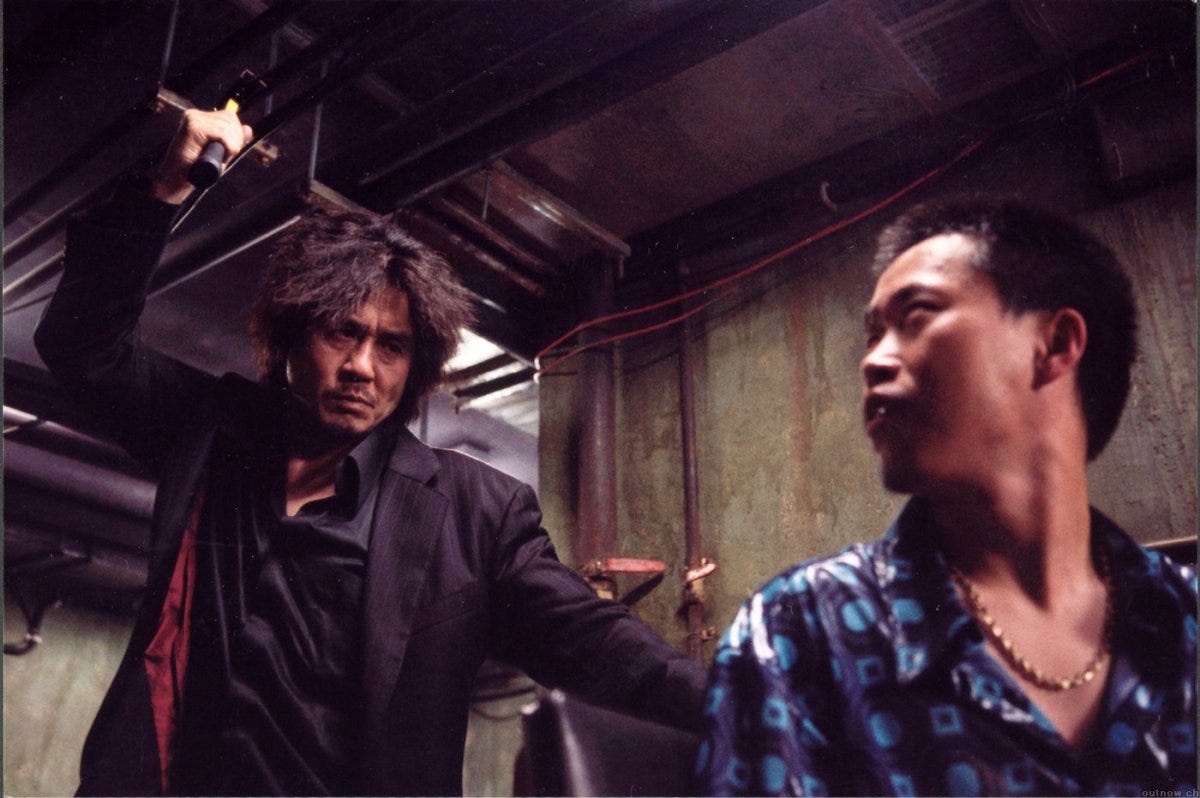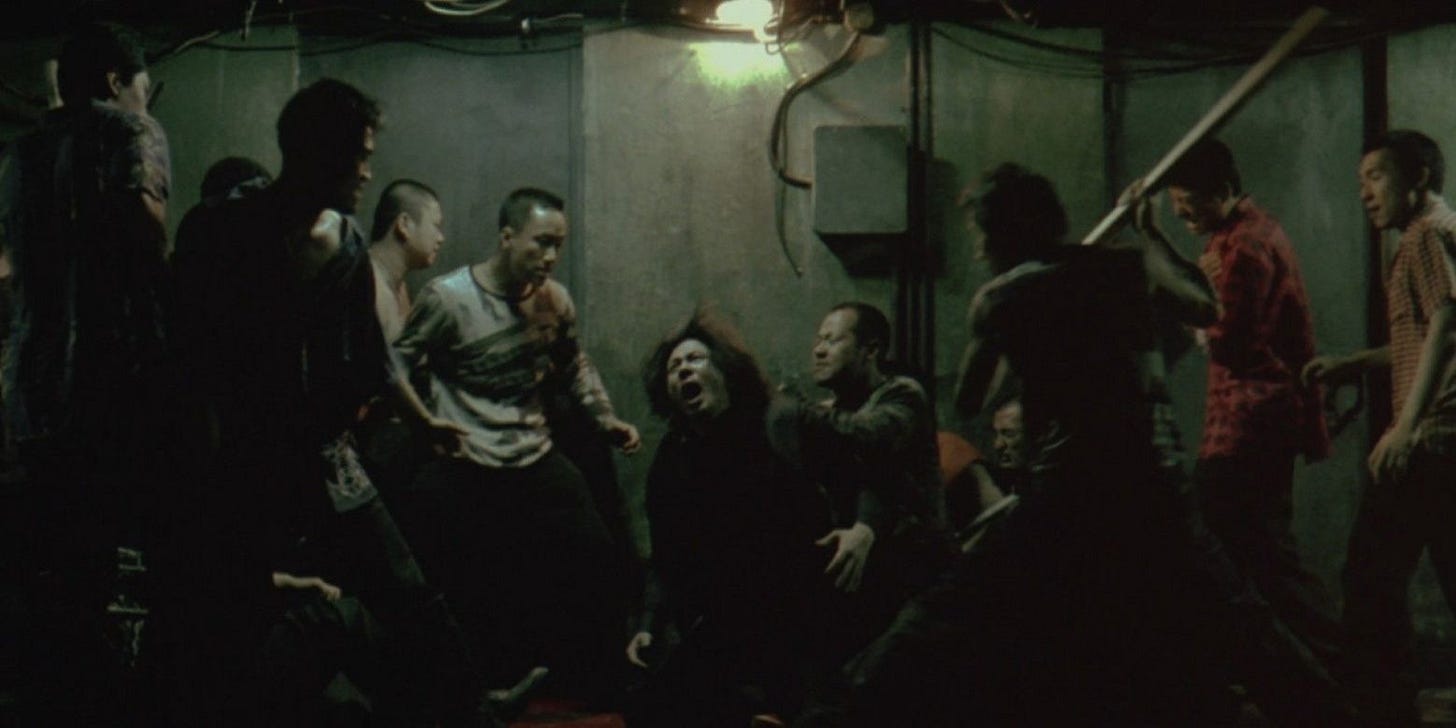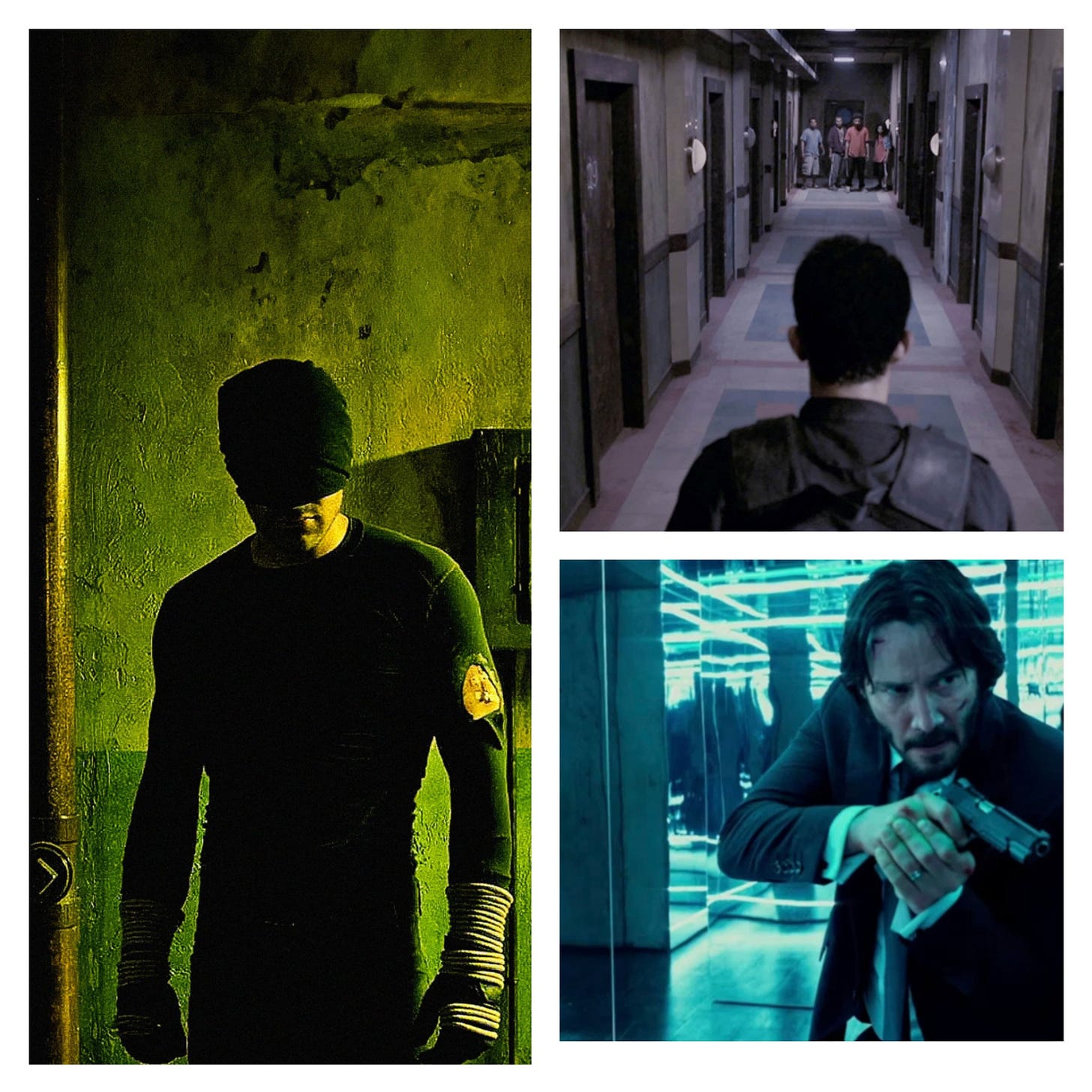The Corridor of Death: A Masterclass in Cinematic Violence
Why the Oldboy hallway fight remains a benchmark for cinematic action to this day
The Oldboy hallway fight. The name is enough to bring images of wanton violence, shaky camera work and a grimy edge to the action that revolutionized the genre. This is not your average popcorn movie that comes out of the Hollywood production system. This is a blood-soaked ballet of destruction and a masterpiece of choreographed chaos that left audiences speechless and many more film makers to try and replicate such style.
The Corridor of Chaos
Imagine a narrow, claustrophobic corridor. Now, picture it filled with an arsenal of weapons: hammers, knives, fire extinguishers, even a razor-sharp tile. Our hero, Oh Dae-su, a man imprisoned for fifteen years, is consumed by a desire for revenge. He’s just carrying a little hammer and with this he’s ready to fight against the horde of assailants. Each punch, each blow, and each grunt tells the story of a man driven to his limits (both phisically and mentally).
This fight is not full of effects and edits like the typical hollywood action films. This fight is raw and primal. The scene captures not just the violence but the vulnerability of its hero. This makes every moment pulse with tension and desperation. Oh Dae-su is stumbling, panting and barely holding. But still he moves forward with the unstoppable force of human will.
Breaking All the Rules
Park Chan-wook, the visionary director of this film, knowingly broke every conventional rule of filmmaking.
The One Take Wonder: Hollywood action sequences mostly rely on a lot of editing, cutting between multiple camera angles to avoid any flaws. Not here. The Oldboy fight sequence is remembered for its single take. Despite its appearance as a flawless one-take scene, it required 17 takes to make it perfect. Choi Min-sik, who played Oh Dae-su, underwent two months of intense physical training to prepare for the role.
Realistic Choreography: Forget predictable punches and kicks. This fight is really a symphony of violence. Here every step, every strike, and every prop is lethal. Unlike the polished fights of Hollywood blockbusters, this masterpiece feels chaotic, raw and unrefined.
Innovative Use of Space: Here the narrow Hallway itself is a character. This hallway is forcing every characters for Close Quarter Combats and amplifying the intensity. There is no room for escape - you only have to fight to survive.
Weapon as Emotion: The hammer in Oh Dae-su’s hand isn’t just a normal weapon, rather it’s a manifestation of his fury, vengeance and determination. This adds a visceral edge to the scene and makes every blow resonate deeply.
The Aftershocks: Impact on Cinema
The Oldboy hallway fight wasn't just a spectacle; it was a seismic shift in action cinema. It’s impact reshaped the action genre across the world of cinema.
A Tempate for Action Genre: Films like The Raid and John Wick owe a significant debt to Oldboy. The emphasis on long takes, realistic action choreography and brutal combat has become the hallmark of action cinemas.
Redefining Violence: The hallway fight showed that violence can be an important part of storytelling. Every wound and every struggle in this scene adds layers to Oh Dae-su’s character and his journey. It also shows that violence can be artistic and emotionally resonant.
The Legacy
The Oldboy hallway fight is more than just a memorable action sequence. More than two decades later, this fight scene still remains as a reminder of the power of innovation and uncompromising storytelling. This shows how innovative artistic approaches can produce groundbreaking achievements in any creative field. Whether you’re a casual viewer or a seasoned cinephile, this scene leaves an indlible mark and forces you to confront the raw, unvarnished essence of cinema.
So, the next time you watch a high-octane action scene, take a moment to appreciate the echoes of Oldboy. Through innovative brutality in fight sequences and camera techniques alongside rare weapon inventions the groundbreaking film stands as an original creator for countless elements that you can still find today in action cinema.








